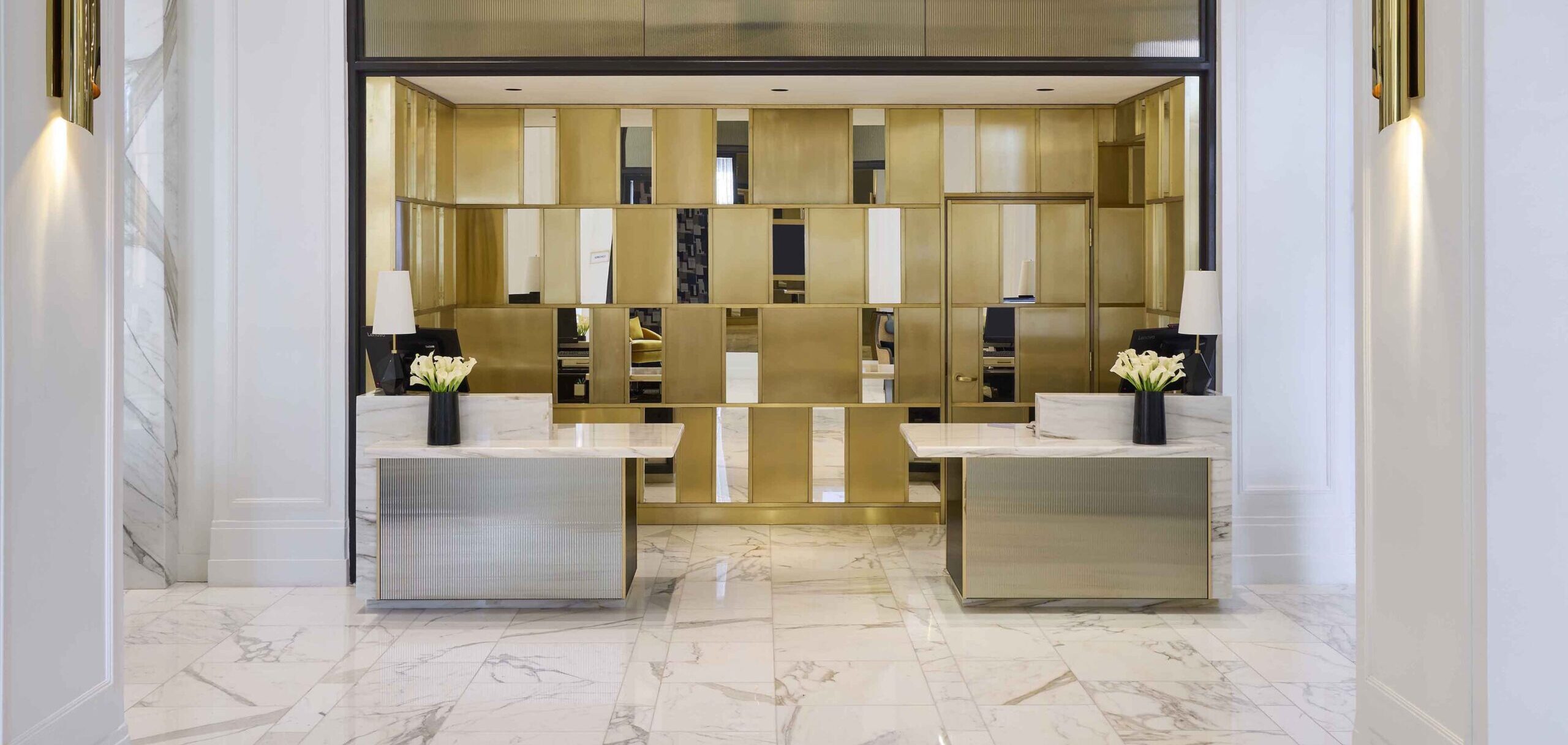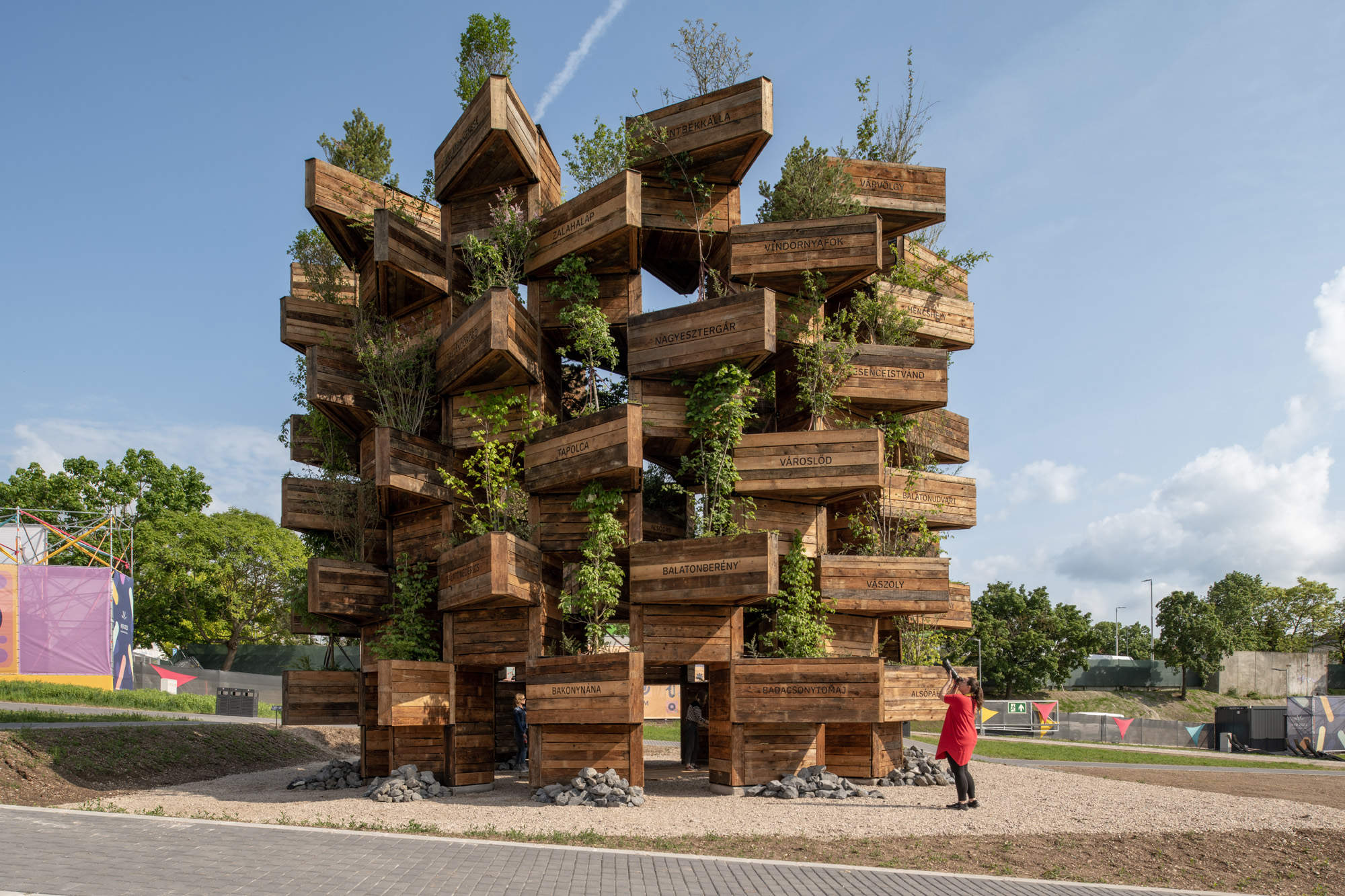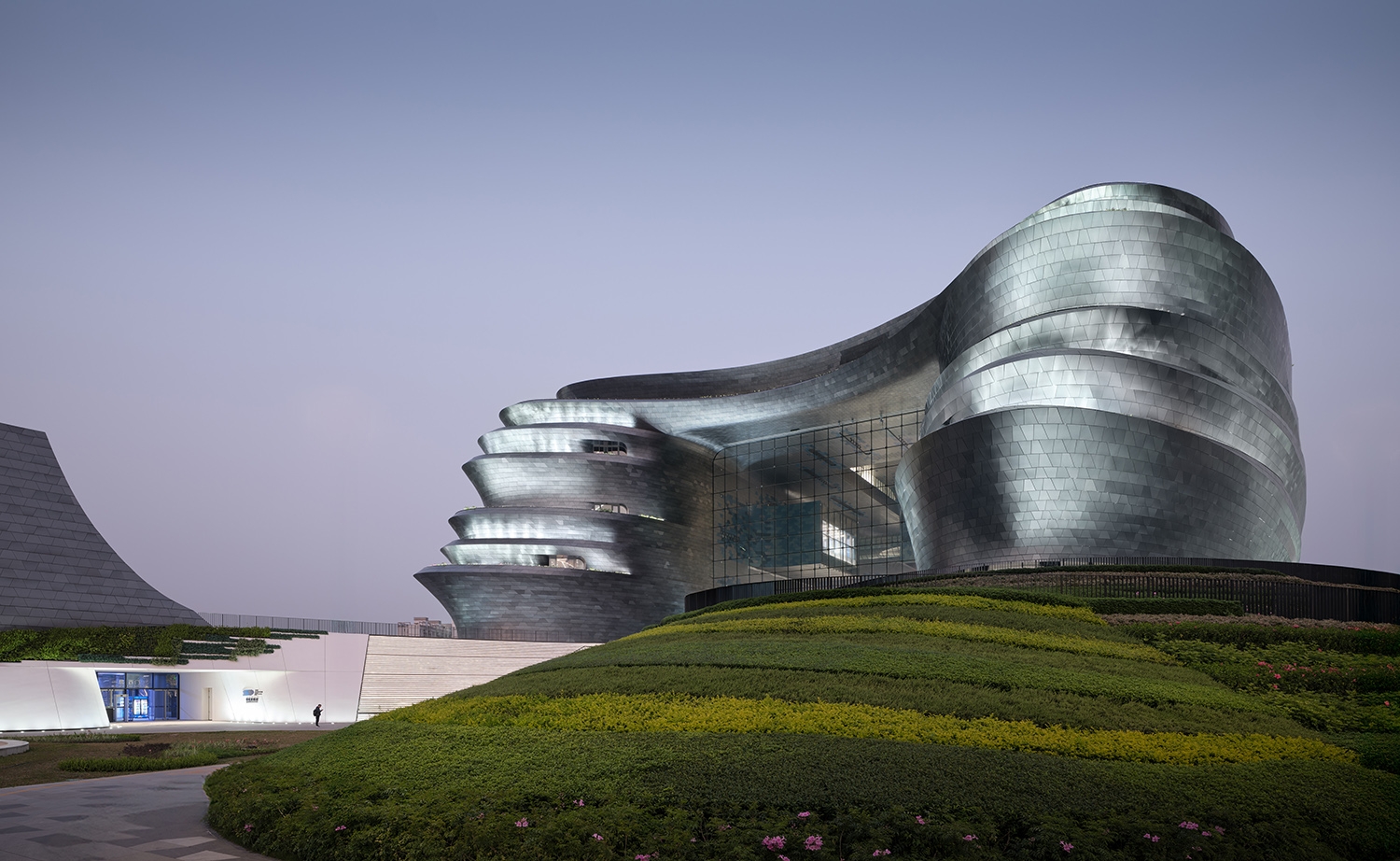The Garden of Communities, developed by the Hungarian architect’s studio Hello Wood, celebrates the rich culture of the Veszprém-Balaton region. The pavilion is a symbolic monument to the cooperation of the 116 municipalities participating in the Veszprém-Balaton 2023 European Capital of Culture program.
Hello Wood is a studio driven by innovation, social responsibility, and a passion for design. They work with wood and other sustainable materials to create functional and artistic but at the same time eco-friendly and socially relevant designs.
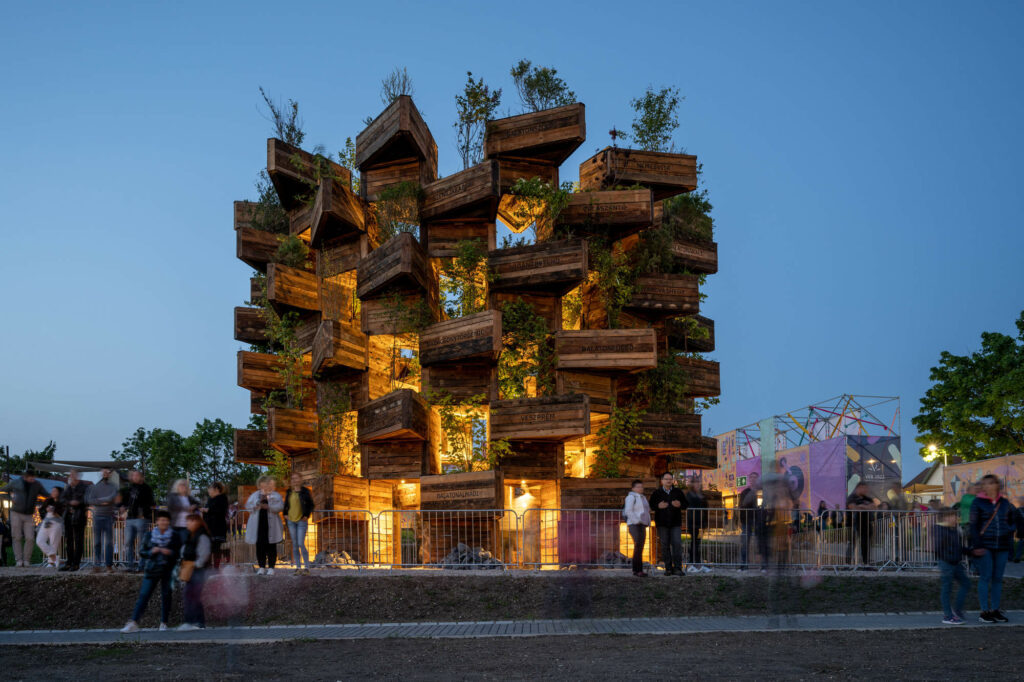
“For each municipality participating in the VEB2023 program, we have designed a unique planter box, with the municipality’s name displayed on the side, containing a sapling. In Veszprém, which is the central site of the European Capital of Culture 2023, we have set up a Garden of Communities, consisting of 116 planters, which promotes the eternal values of community cooperation,” says Balázs Szelecsényi, the project’s architect.
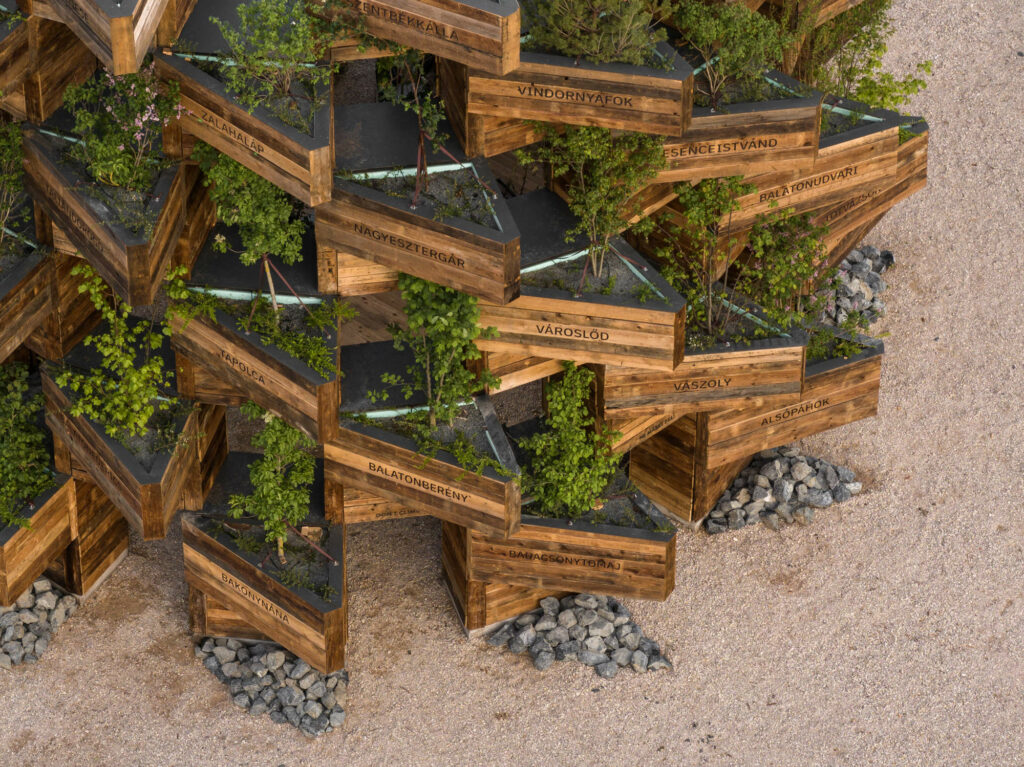
The carefully curated triangular plants, forming a circular exhibition, invite everyone to explore the pavilion’s enchanting atmosphere. Amidst the contrast of architectural precision and flourishing vegetation, the garden becomes a living canvas, drawing in visitors eager to stroll through the verdant lanes bearing the names of villages and cities that resonate with their personal histories.
Rising in tiers, the triangular plants not only create a visually striking display but also symbolize the diverse regions through native tree samplings proudly displayed in designated boxes. As the seasons unfold, a biodiverse vertical garden emerges, dynamically adapting and strengthening with time. The ingenious design incorporates an automated irrigation system seamlessly integrated into the pavilion’s structure, ensuring the continuous growth of the lush vegetation.
This sophisticated pavilion’s intricate architecture extends beyond aesthetics, strategically providing each plant species with tailored access to sunlight, wind, and rainfall. The result is a living testament to thoughtful design, accommodating the unique needs of every plant and fostering a thriving ecosystem within the heart of Veszprém-Balaton’s cultural celebration.
Another key factor for the design of the pavilion is the historical significance of the site. It was home to one of the largest furniture factories in the region for approximately 120 years. Moreover, another way this project commemorates the heritage of the locations is the material from which the planter boxes are made. The cladding of the boxes is made from almost 120-year-old reclaimed timber, which is the old larch planking from the recently renovated Drechsler Palace in Budapest. In this sense, the use of antique materials contributes to the timelessness of the work, besides its historical reference.
In 4 years, each planter will return to its respective municipality. After this, the samplings from the installation will take root and continue to grow symbolizing the unity of 2023.




